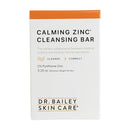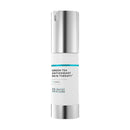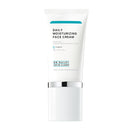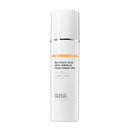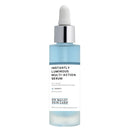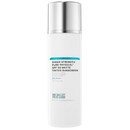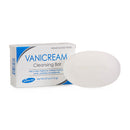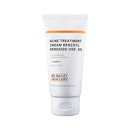Tips For Treating Perioral Dermatitis

Tips for treating perioral dermatitis often require a trip to the dermatologist. This frustrating rash is all too common. It also has a tendency to come back after it has healed. This question from a reader is of interest to anyone suffering from perioral dermatitis.
 Hi Dr. Bailey, Do you have any advice how to get rid of perioral dermatitis with clotrimazole? I am dealing with gluten/allergy and leaky gut issues and take supplements for that, because I'm sure they are related. Also, is it common to get it not only around the mouth, but on the forehead? I get itchy pimples in clusters that won't go away for anything! Thanks, Lori
Hi Dr. Bailey, Do you have any advice how to get rid of perioral dermatitis with clotrimazole? I am dealing with gluten/allergy and leaky gut issues and take supplements for that, because I'm sure they are related. Also, is it common to get it not only around the mouth, but on the forehead? I get itchy pimples in clusters that won't go away for anything! Thanks, Lori
Hello Lori,
Typically, perioral dermatitis happens on the face and involves the perioral and periocular (around the eyes) skin. It can move out from there, but I have not seen it jump to the forehead. That said, an inflammatory rash like this can present differently on every person.
Perioral Dermatitis
Do you have perioral dermatitis?
Perioral dermatitis usually manifests as red itchy pimples and little red blisters around the sides of the mouth. The rash may start subtly at first, but it gradually revs-up. The skin can get really red, inflamed and blotchy-looking.
The rash typically extends onto the chin, up the crease to the nose and can move to the skin around the eyes. The pustules and blisters ultimately become very red, large and "juicy" looking. Perioral dermatitis can be mistaken for acne, rosacea and facial dandruff (aka seborrheic dermatitis).
Unfortunately, this is one of those frustrating and fairly common rashes that we don't understand. Doctors and scientists have no clue about what causes it.
There is a link between perioral dermatitis and chloride or fluoride exposure in dental products, strong prescription (halogenated) cortisone creams/ointments and asthma inhalers.
How Do Doctor's Treat Perioral Dermatitis?
Tetracycline is the usual treatment for perioral dermatitis.
In my experience, it needs to be used for at least several months. Or else, the rash comes back quickly.
Supportive skin care and topical prescription products help the skin heal faster.
I really don't like putting patients on oral antibiotics because I am concerned about the microbiome of beneficial microbes on and in their body. This means that I always combine a broad topical approach in the hopes that it will allow me to stop the tetracycline as soon as possible. I usually combine the oral treatment with three topical medicines. Patients layer the medicines on their rash.
The topical medicines that I use to treat my patients in my dermatology practice who have perioral dermatitis are:
- An anti-bacterial topical (Metrogel, erythromycin or Cleocin topical prescriptions).
- An antifungal cream is used to treat perioral dermatitis such as ketoconazole or clotrimazole creams which are often marketed as athlete's food creams.
- A mild, non-halogenated cortisone cream such as non-prescription hydrocortisone (cortisone use to the face has side effects such as skin thinning and should be supervised by a physician).
Key points are that all topical medicines need to be non-irritating, and all (except the cortisone) need to be continued for at least a month after the skin has cleared.
I usually also have my perioral dermatitis patients wash with my Calming Zinc Soap. This naturally-hydrating and soothing soap contains a full 2% pyrithione zinc to help control skin yeast germs that may play a role in this rash. For years, pyrithione zinc cleanser was only available as a harsh soap called ZNP, or in harsh dandruff shampoos. Now, it's available in this hydrating, naturally anti-inflammatory bar soap.
I have my perioral dermatitis patients use Calming Zinc indefinitely because I find that it helps prevent recurrences, too.
To help heal the skin, I also incorporate Green Tea Antioxidant Skin Therapy into their complete skin care routine. This helps reduce skin redness and reload skin antioxidant depleted by the inflammatory rash. It is a soothing product that I like patients to continue as part of their preventative skin care.
Moisturizer is also important to use because dry skin has reduced barrier integrity. I have my patients layer Daily Face Cream on top of the Green Tea as part of maintenance. This helps heal damaged skin barrier and to keep it healthy.
Get all 3 of these products in my Facial Flaking and Redness Solution Kit

I designed this kit for people suffering from facial conditions that cause profound redness such as seborrhea, rosacea...... and perioral dermatitis. I like to include a sunscreen to prevent hyperpigmentation. The routine works for patients and internet customers like A.M. who share her story with me on Instagram,
I suffered for so many months and your products are the only thing that saved me! I had really bad perioral dermatitis around my nose with major redness swelling and pustule bumps that would just not go away. I had literally tried everything over the counter as well as Elidel prescription from a dermatologist. The Elidel would work for a few days and it would get bad again. Luckily, I googled products for perioral dermatitis and your website came up.I wound up getting the Extremely Gentle Cleanser, Calming Zinc soap, Green Tea Antioxidant Skin Therapy, Daily Moisturizer, and Sheer Strength Sunscreen. All have been amazing. The routine doesn’t clog pores and it’s non greasy. I have also bought some of the loose powder face makeup. I think the drug store sunscreens with oxybenzone I’m allergic to. Your products are amazing and I can’t say enough good things about them. A.M.
All the products A.M. used, including the sunscreen, are available in my Rosacea Therapy Kit.
Also, continued exposure to fluoride and chloride-containing medicines and products needs to be avoided because this has been linked to some cases of perioral dermatitis.
You need to know that there is a high relapse-rate with perioral dermatitis. Patience and persistence with treatment and the skin care routine is important. If medicines are stopped too soon, the rash comes right back.
In my experience, patients who are prone to perioral dermatitis typically go through a "spell' where they get it several times over a 2-to-5-year period. This happened to me. Being a dermatologist does not protect you from this vexing skin condition.
The skin care routine I use to treat perioral dermatitis in my dermatology practice:
![]()
CLEANSE facial skin with Calming Zinc Soap once or twice daily. It can be drying. If you need another soap to alternate with Calming Zinc use a pH balanced sulfate free facial cleanser such as my Extremely Gentle Foaming Facial Cleanser.
![]()
CORRECT skin inflammation and redness by applying Green Tea Antioxidant Skin Therapy morning and night after cleansing. I have my patients layer their prescription or non-prescription medicines such as the antifungal cream clotrimazole on top of the Green Tea.
![]()
HYDRATE skin so that it can heal the disrupted barrier by applying a non-irritating moisturizer such as my Daily Face Cream.
![]()
PROTECT inflamed skin from UV exposure every day. It can cause permanent uneven skin pigment problems. Even sun coming through window glass can pigment inflamed skin. Use a broad spectrum zinc oxide sunscreen such as sunscreen. Sheer Strength Pure Physical Matte Tinted SPF 30+ Sunscreen is my top choice. This unique product is tinted with iron oxide that also blocks visible light that can contribute to hyperpigmentation skin problems. This is the facial sunscreen that I wear every day.
I hope this helps. Please remember, I can talk generally about perioral dermatitis. But, of course, you need to follow up with your dermatologist regarding your diagnosis; I cannot in any way make a diagnosis or give specific advice for your particular treatment over the internet.
Take this information into your treating dermatologist to be sure you have the correct diagnosis because your description is not classic for perioral dermatitis.
For more information on perioral dermatitis click here.
Warm Regards,
Cynthia Bailey MD, Dermatologist
Disclaimer: Please realize that availing yourself of the opportunity to submit and receive answers to your questions from Dr. Bailey does not confer a doctor/patient relationship with Dr. Bailey. The information provided by Dr. Bailey is general health information inspired by your question. It should not be a substitute for obtaining medical advice from your physician and is not intended to diagnose or treat any specific medical problem (and is not an extension of the care Dr. Bailey has provided in her office for existing patients of her practice). Never ignore your own doctor’s advice because of something you read here; this information is for general informational purpose only.
Author: Dr. Cynthia Bailey M.D. is a Board Certified dermatologist practicing dermatology since 1987. She has done well over 200,000 skin exams during her career and authors the longest running physician written skin health blog in the world.


